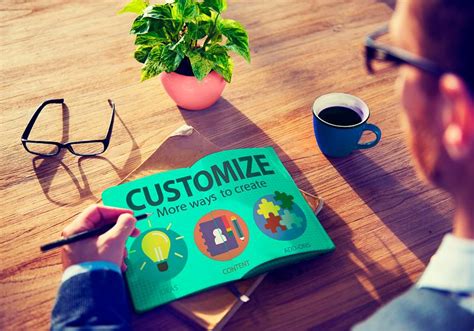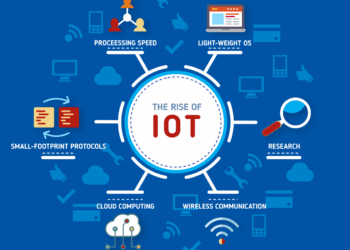Your streaming service homepage, your social media feed, your search engine results, and even the ads you scroll past are all part of a unique, living digital environment built for an audience of one: you. This is the hyper-personalized web. We have moved far beyond the era of simple personalization—like an e-commerce site remembering your name. We are now in an ecosystem where artificial intelligence and big data analytics work in real-time to predict your desires, shape your experiences, and guide your decisions.
This transformation is not a distant future; it’s the engine of the modern digital economy. For businesses, mastering it is the key to unlocking unprecedented revenue, higher customer loyalty, and a dominant market position. For content creators and publishers, it’s the driving force behind higher Google AdSense revenue, as advertisers are willing to pay a premium to reach a perfectly targeted user. For users, it offers a world of unparalleled convenience, where the web seems to anticipate your every need.
But this new reality is a double-edged sword. This same engine of convenience is fueled by the most valuable commodity of the 21st century: your personal data. It carries profound risks, from the erosion of privacy to the creation of “filter bubbles” that can warp our sense of shared reality.
This comprehensive guide will deconstruct the hyper-personalized web. We will explore the sophisticated technology that powers it, analyze the enormous financial incentives for businesses (especially regarding SEO and AdSense), and confront the critical ethical challenges we must navigate.
The Engine: How Hyper-Personalization Actually Works
Hyper-personalization is not magic; it’s a cold, calculated process of data collection and analysis. It’s a feedback loop that constantly learns and refines its understanding of you. This engine is built on two primary components: the data pipeline and the analytical brain.
A. The Data Collection Pipeline
Before any personalization can happen, the system needs fuel. This fuel is data, and it’s collected from several distinct sources.
- First-Party Data: This is the gold standard and the least controversial. It’s the data a company collects directly from you with your consent. This includes your purchase history on an e-commerce site, the articles you read on a blog, your “likes” on a social platform, or the information you enter into a form. It’s high-quality, relevant, and transparent.
- Third-Party Data: This is the controversial and (famously) dying component. This is data collected by an entity that does not have a direct relationship with you. It’s purchased from data brokers and aggregated from thousands of different websites via tracking cookies, scripts, and pixels. This is how an ad for a pair of shoes you viewed on one site can “follow” you across the internet, appearing on news sites and social media. Google’s plan to phase out third-party cookies is a direct response to the massive privacy concerns surrounding this practice.
- Zero-Party Data: This is the new frontier of ethical data collection. It’s data that a customer intentionally and proactively shares with a brand. Think of a beauty site that asks you to take a “skin type quiz,” a news app that lets you select your “topics of interest,” or a preference center in your user account. Users are willing to provide this data in exchange for a genuinely better, more tailored experience.
B. The Analytical Brain: AI and Machine Learning
Collecting data is just the first step. The sheer volume of this information—terabytes of clicks, scrolls, and mouse movements—is meaningless without a brain to process it. This is where Artificial Intelligence (AI) and Machine Learning (ML) come in.
- Predictive Analytics: ML models sift through your past behavior to build a “probabilistic profile” of your future behavior. They answer questions like, “Based on the 5 articles this user read on finance, what is the probability they will click an ad for a new credit card?” or “Users who bought this product and live in this zip code are 80% more likely to purchase this add-on within 7 days.”
- Behavioral Segmentation: Old-school marketing segmented people by broad demographics (e.g., “males, 30-45, living in New York”). Hyper-personalization uses micro-segmentation. It creates tiny, dynamic clusters of users based on real-time behavior (e.g., “price-sensitive evening shoppers,” “new parents researching safety features,” or “users who have abandoned a cart in the last 3 hours”).
- Dynamic Content Optimization (DCO): This is where the magic happens. DCO is the technology that allows a webpage or an email to change its content on the fly for each individual user. Two people visiting the same homepage at the same time will see two different things. One might see a “20% Off” banner (because the AI tagged them as price-sensitive), while the other sees a “New Arrivals” banner (because they are a trend-focused repeat customer).
The Business Case: Why Personalization Equals Profit
Companies are not investing billions in this technology for fun. They are doing it because it is, without question, the most powerful driver of revenue in the digital age.
A. The Google AdSense & CPC Revolution
For content creators, bloggers, and publishers, hyper-personalization is the engine that directly powers your AdSense income. Here’s how:
The value of an ad impression is based on its relevance. An advertiser (say, a luxury car brand) is willing to pay a very high Cost-Per-Click (CPC) to show their ad to a user who is provably in the market for a new car. They are willing to pay almost nothing to show it to a random teenager.
Hyper-personalization, powered by Google’s massive data ecosystem, allows advertisers to stop guessing. They can bid specifically for impressions served to users who have:
- Recently searched for “best luxury SUV 2025”
- Visited multiple car review websites
- Used Google Maps to navigate to car dealerships
When this highly-qualified user lands on your blog, a real-time auction happens. The luxury car brand, knowing this user’s profile, bids significantly higher than a generic brand. The result? The ad slot on your site is sold for a much higher price, and your CPC and RPM (Revenue Per Mille) skyrocket.
This is why “niche” blogs are so profitable. A blog about “credit card rewards” (a YMYL – Your Money Your Life – topic) attracts users who are actively looking for high-value financial products. Advertisers will pay a premium to reach them, leading to extremely high CPCs for the publisher.
B. Skyrocketing Conversion Rates in E-commerce
The entire business model of giants like Amazon and Netflix is built on hyper-personalization.
- Amazon’s “Recommended for You” and “Customers Also Bought” modules are legendary. These AI-driven systems are responsible for a massive percentage of their total sales. They reduce friction by showing you what you want before you even know you want it.
- Netflix’s homepage is 100% personalized. The entire interface—from the shows suggested to the artwork used to promote them—is tailored to your viewing history. If you watch a lot of comedies, you’ll see the comedic-themed poster for a movie. If you watch thrillers, you’ll see the suspense-themed poster for the same movie. This is designed to maximize the click-through rate.
This level of tailoring dramatically increases Average Order Value (AOV), reduces cart abandonment, and builds ferocious brand loyalty.
C. Enhanced User Experience (UX) and Loyalty
When done right, personalization doesn’t feel creepy; it feels helpful. A web that anticipates your needs, remembers your preferences, and filters out the noise provides a superior user experience. This “white-glove” service builds loyalty. Why would you switch to a competitor’s “dumb” service that treats you like a stranger every time you visit? This reduction in customer churn is a massive, often hidden, source of long-term profit.
The Dark Side: The Unseen Costs of a Tailored Web

This convenience comes at a steep, and often hidden, price. The same mechanisms that deliver relevant ads also have the power to create profound societal and personal problems.
A. The Complete Erosion of Digital Privacy
The foundational premise of hyper-personalization is constant surveillance. Every click, every search, every second of hesitation, and every location you visit is logged, stored, and analyzed.
- The “Creep Factor”: This surveillance often crosses a line. Users report feeling “listened to” by their phones when an ad appears for something they only talked about. While audio-snooping is largely unproven, the predictive models are so accurate they can infer your needs from other data points, which feels just as invasive.
- Data Breaches: Your hyper-personalized profile—a detailed log of your habits, health concerns, financial status, and political beliefs—is a goldmine for hackers. When a data breach occurs, it’s not just an email address that leaks; it’s your entire digital identity.
B. The Filter Bubble and Societal Polarization
This is arguably the most dangerous side-effect. The term “filter bubble,” coined by Eli Pariser, describes a state of intellectual isolation that results from personalized feeds.
Here’s how it works: An algorithm’s primary goal is to maximize engagement (keep you clicking, watching, and scrolling). The easiest way to do this is to show you content that it knows you will like or that will provoke a strong emotional reaction.
If you click on one news story that leans to one side of a political issue, the algorithm learns. It shows you another. And another. Soon, your entire news feed—whether on social media or a news aggregator—is filled with content that confirms your existing biases. Content from “the other side” simply ceases to exist in your reality.
The result is a public that no longer shares a common set of facts. It deepens political polarization, allows misinformation to spread unchecked within a receptive “bubble,” and makes democratic compromise nearly impossible.
C. Algorithmic Bias and Digital Manipulation
AI is not objective. It is trained on data created by humans, and it inherits all of our hidden biases.
- Discriminatory Outcomes: If an AI model is trained on historical loan application data, it may “learn” that a certain zip code (historically associated with a specific race or income level) is “higher risk.” It will then perpetuate this bias by denying loans to qualified applicants from that area. This has been shown in everything from job ad targeting to facial recognition.
- Digital Nudging: Personalization can easily become manipulation. The system knows your psychological triggers. It knows if you are susceptible to “fear of missing out” (FOMO) and can show you a “Only 2 left in stock!” banner. It knows if you’re a “social proof” person and can show you “15 people in your area just bought this.” This nudging can subtly influence you to buy things you don’t need or make decisions that aren’t in your best interest.
The SEO Impact: Hitting a Constantly Moving Target
For SEO professionals and website owners, hyper-personalization has fundamentally changed the game. The concept of a single, static “Rank #1” is dead.
A. The Reality of Personalized Search
The Google Search Results Page (SERP) is one of the most personalized pieces of digital real estate. Your search for “best restaurants” will show wildly different results than mine, based on:
- Your Physical Location: (The most obvious one)
- Your Search History: (The most powerful one) If you frequently search for “vegan recipes,” your “best restaurants” query will heavily prioritize vegan-friendly options.
- Your Device and Other Context: Google knows if you’re on a phone (prioritizing mobile-friendly sites) or if it’s 6:00 PM (prioritizing restaurants that are open now).
This makes traditional rank-tracking a fuzzy science. Your site might be #1 for a user in Chicago who has visited your site before, but #8 for a new user in Miami.
B. The Shift from Keywords to ‘User Intent’ and ‘Entities’
Since you can no longer target a single keyword for all users, modern SEO is about mastering user intent. You must ask: What is the user trying to accomplish?
- Topical Authority: Instead of creating one page for “best running shoe,” a smart SEO strategy involves creating a cluster of content that covers the entire topic: “best running shoes for beginners,” “best trail running shoes,” “how to choose running shoes,” etc. This proves to Google’s AI (like RankBrain and MUM) that you are an authority on the topic (or “entity”) of running shoes.
- E-E-A-T (Experience, Expertise, Authoritativeness, Trustworthiness): This is Google’s human-centric response to the risks of a personalized web. For sensitive “Your Money Your Life” (YMYL) topics—like finance, health, and law—Google’s algorithm counters personalization by heavily prioritizing E-E-A-T signals. It wants to show the most trustworthy and expert content, not just the content you’re most likely to click on. This is a check and balance against its own personalization engine.
C. On-Page Personalization as an SEO Factor
This is an advanced strategy where you use personalization on your own site to improve SEO. By identifying a user (e.g., a new vs. returning visitor), you can dynamically change the on-page content. You might show a “Welcome! Start Here” call-to-action (CTA) for new users and a “Check out our new advanced guide” CTA for returning users.
This personalization increases user engagement signals:
- Longer Dwell Time: The content is more relevant, so they stay longer.
- Lower Bounce Rate: They find what they need and don’t immediately leave.
- Higher Conversion Rate: The CTA is tailored to them.
These strong engagement signals are powerful positive indicators to Google, which can indirectly boost your rankings.
The Future is Ethical and Aware
![]()
The hyper-personalized web is here to stay. The immense profitability for advertisers, publishers, and e-commerce brands ensures that. The “death of the third-party cookie” is not the end of personalization; it’s the beginning of its next chapter—one focused on first-party data, user cohorts (like Google’s Privacy Sandbox), and AI-driven predictive analytics that don’t need to track your every move.
The path to mastering this new web is twofold:
- For Businesses and Creators: The mandate is ethical personalization. Build trust by being transparent. Use zero-party and first-party data to provide genuine value, not to manipulate. The companies that win in the long term will be the ones their customers trust with their data.
- For Users: The mandate is critical awareness. Understand that what you see is not the full picture. Use privacy tools (like VPNs, ad blockers, and browser containers) to reclaim control. Most importantly, make a conscious effort to seek out dissenting opinions and information outside of your “bubble.”
The hyper-personalized web is a mirror that reflects our own desires back at us. The challenge is to ensure it remains a helpful tool and doesn’t become a cage of our own making.










